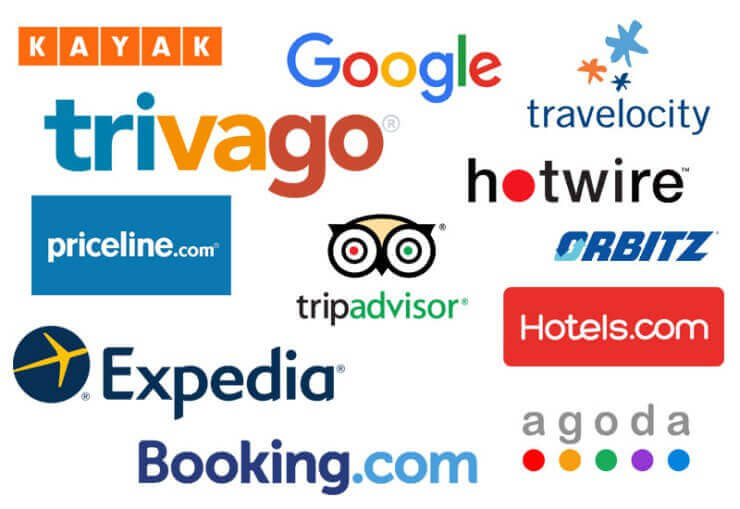
Despite the fact that metasearch is not a new topic, there are still questions in the hotel industry about how these channels can be effective when it comes to customer acquisition costs.
NB: This is an article from Hotelchamp
Metasearch engines differ slightly from OTAs because it gives hotels an opportunity to use a distribution channel and save money at the same time. While this can be a very successful model, there’s still a big risk.
Metasearch engines (or websites) compare hotel rates from different OTAs and other third parties in one place. Visitors can search for hotels and the engine will present options for their stay. Once the visitor selects a hotel property, they can be redirected to a particular website to complete their booking. These engines can provide information on hotels and redirect the visitor to the official hotel website to book direct OR they can be redirected to an OTA website instead.
The cost per click (CPC) for metasearch only gives a certain direction and if the conversion is low on the hotel website then these costs can be much higher than expected. For this reason, hotels should ensure they are providing a seamless journey on their websites to attract and convert guests.
Top metasearch engines
- TripAdvisor
- Trivago
- Kayak
- Skyscanner
Platforms like Google Hotel Ads allow potential bookers to see hotel rates in direct comparison to OTAs when searching on Google. However, hotels need to keep up with demand and adjust their rates to stay competitive so guests will actually book direct. Hotels must have a strong presence in these channels to compete fairly and especially with big players such as Booking.com or even Google itself.
Hotels have to consider what will make them successful and how they can effectively reach their guests online. Sometimes having a beautiful website and a social media presence is simply not enough and hotels need to seek additional help. This help can come via OTAs but it’s common knowledge that these channels will take hefty commissions to sell a room.
If you’re planning on investing in metasearch campaigns for your hotel this blog will help discover three ways to reduce your acquisition costs:
1. Optimize metasearch bid adjustments based on data
Google allows you to increase or decrease the amount you bid per click based on who the visitor is and what kind of search they are making:
- Device
- Location
- Booking window
- Check-in day
- Length of stay
For example, if your desktop traffic converts 3x higher than mobile, then, in general, you would expect 3x bookings for the same amount of clicks on desktop. A desktop click is much more valuable than a mobile click in this case—so you should bid extra for a desktop visitor, and less for a mobile visitor.
Bid multipliers allow you to adjust your bid based on the conversion data you have. Some of this data can be found in Google Analytics such as device and location conversion rates.

2. Resolve the information gap
It’s pretty simple, the conversion rate is key for meta spend: if you bring in lots of traffic but nobody books then your return on investment will be low. The better the conversion rate, the lower your cost per booking.
Unfortunately, hotel websites are sinkholes for meta traffic. Visitors are sent directly into a dry booking engine and have no way to learn more about the hotel beyond the room having a Nespresso machine and TV.
Things are made worse as most booking engines do not have backlinks to the website, forcing many to leave to find information.
Contrast this to the landing experience at Booking.com:
- Visitors land on the search page, where they can look at other hotels for the same dates
- If they click on “choose your room” they first see photos, reviews, facilities, and a description about the property
- If a visitor leaves the page an exit-intent message appears persuading them to continue

Use Hotelchamp to give visitors a feeling for your hotel when they enter. For example, if there is a good write-up in a well-known publication then you can display a welcome message like this.

If you have some key features or are in a good location, present it with a USP bar. Even better, personalize it to the visitor. If it’s a business traveller, then highlight your convenient location 5 minutes walk from a metro station.

3. Highlight non-price benefits
Metasearch is a great way for visitors to compare channels based on price, but many hotels also offer non-price perks such as late check-out or a drink upon arrival. Use USP Comparison messaging upon exit to show non-priced benefits.

Don’t forget that visitors from metasearch are comparing channels—so help them compare. Alternatively, offer the visitor a free drink voucher. A drink costs less than a meta click—and you only need to give them to the people who actually book so it’s hyper optimal.
Metasearch engines are becoming one of the main platforms for travel planning and booking. Hotels need to maintain an active presence in these channels and enhance the book direct experience for their guests. Booking direct is often the cheapest option and hotels have a much higher chance to convert visitors that come to their website. Now more than ever hotels need to find creative ways to use technology to clearly communicate their added value and take advantage of their data to reduce acquisition costs.




